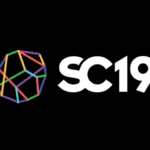Feeling is Believing: e-Textiles Bring Music to Life for the Deaf
Avnet teams up with tech incubator Not Impossible Labs to create an innovative e-textile product that enhances the music-listening experience for people with hearing loss.

Music is one of life’s great joys. It unites people across time and culture. It is enjoyed by those who create it as well as those who listen to it — and that includes those who technically can’t hear it. People with varying degrees of hearing impairment may not experience the full expression of music but that doesn’t prevent them from enjoying important aspects of it. After all, the great composer Ludwig von Beethoven continued to write music even as he lost his own hearing. Hearing loss or impairment simply changes the way music is experienced. For deaf music fans, vibrations produced by music can be felt throughout the body. Many deaf people enjoy attending concert events, where the amplification of live music produces more pronounced vibrations, and the excitement of being close to musicians and fellow fans is part of the fan experience.
Avnet, in partnership with technology incubator Not Impossible Labs, has developed an innovative wearable e-textile product designed to enhance the experience of music for people with hearing loss or impairment. Called Vibrotextiles, this system consists of a harness, two wristbands, and two ankle bands that supply eight areas of vibration across the user’s body with the assistance of wireless communication. We talked to Avnet’s Erich Van Stralen, lead Avnet engineer on the Music: Not Impossible project to learn more about this groundbreaking system.

e-Textiles have been around for a while now. How do Vibrotextiles differ in terms of technology involved?
Not Impossible’s Vibrotextiles technology breaks new ground in terms of complexity of the wearable. In the Music: Not Impossible product, for instance, the inclusion of the extremities means it is essentially five separate wearables that work in unison. The fact that this was developed with the ability to broadcast a live signal and maintain signal strength across hundreds or even thousands of users with no perceptible latency is a real differentiator. The detail and nuance of the haptics and the specificity available in how they are activated invites a wide variety of applications, including many yet to be conceived of, truly inviting the opportunity to make the impossible, Not Impossible.
Would it have been possible to make the Music: Not Impossible product five years ago, or has innovation in components made it possible?
Music: Not Impossible would have looked and felt more like a heavy, stiff RoboCop suit five years ago. This light, flexible system is possible thanks to cutting-edge wireless technology and low-power electronics, which minimize the profile of both the electronics and supporting plastics on the user. Interestingly, designing with these components using the latest CAD programs and computing power played a huge role in bringing together electronics, firmware, mechanical systems, and soft goods to life in high fidelity and extremely quickly. This resulted in a light, flexible, wearable system that many users say allows their minds to focus on the experience, to the point where they’ve forgotten they are wearing a system at all. It’s the ultimate compliment for the execution.
What connectors are involved in this product?
One key element of the Music: Not Impossible product is the flexibility of the wearables in spite of the complex electronics and wiring needed. Extremely small micro connectors were employed in conjunction with very fine wiring throughout the system to make the wearables light and flexible for the user. Size, reliability, and cost were key to the connector selections. Balancing those parameters ensured a great user experience and also took scalability into consideration.
What other electronics are involved in this system?
Batteries, cutting-edge antennas, vibration actuators, low-power wireless processors, and LEDs are all key elements to the Music: Not Impossible system.
Were these products available to your designers, or did they work with suppliers to create new components (or adapt existing ones) for this use?
Over time, as costs are reduced, they may consider more custom components, but for now, we’ve recommended Not Impossible use off-the-shelf components wherever possible to keep costs and lead times down.
Aside from bringing music to more people, what other medical applications might Vibrotextiles have?
There is a litany of potential therapeutic, medical, experiential, and accessibility applications for e-textiles, many of which are becoming apparent and under consideration. There are also specific, compelling applications that are currently being developed and that you’ll hear more about in the future.
Like this article? Check out our other New Technology articles, our 2019 Article Archive, and our Consumer Electronics and Medical Market Pages.
- Meet the Connector: DIN Standard Connectors - April 16, 2024
- Software-Driven Radio Reinvigorates Old Technology - April 9, 2024
- What is a Busbar? - April 2, 2024





